Many young mountain bikers enjoy working on dirt jumps and mountain bike trails growing up, I certainly did. We’d never have the right tools but finding the right terrain, coming up with ideas and building our own jumps was great fun.
Creating your own jumps or line is super rewarding but it doesn’t take long before you realise it takes a lot of work to get something finished. Using the right tools and equipment will help you and your friends with building quality and speed.
You may think you only need a shovel to create jumps, while you’re technically right there’s a lot you can’t do without some more specific tools. Think about your local woods, how easily accessible are the hillsides you’d use for creating mountain bike jumps? My guess is not very.
We’re going to go through the recommended tools for jump building, what they can be used for and how to use them to create the best jumps and trail lines possible.
Shovel
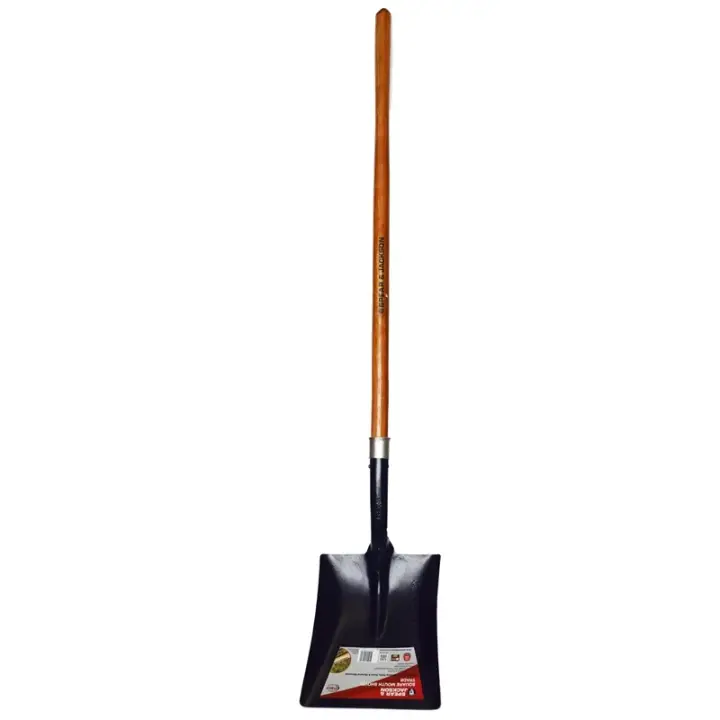
Spear & Jackson Square Mouth ShovelClick Here to Check Best Price
It’s very common for people to not understand the difference between spades and shovels. These two tools are optimised for different uses but they can both work well interchangeably. If you don’t have access to them both you can get by with just one.
Spades generally have a handle you can use. A cross handle or a D shaped handle is the most common. Spades have a flat head and a shallower bend to the body, making them better for cutting and scraping dirt. You’ll commonly come across roots, leaves and other debris that need cutting or moving out the way when building. Shovels on the other hand have pointed round tips that are much better at sinking into the dirt before moving much larger amounts.
To put it simply, spades are a better all-round tool, working well at cutting turf edging or roots while also being good at digging. Shovels are more refined, great at moving large amounts of dirt fast before compacting it but they’re not very versatile in other areas.
The perfect shovel for dirt jumping is one with a comfortable grip, a sharp end and footplates. You can’t always expect your terrain to be soft and moisture-rich. Footplates are a must-have for a good shovel, they protect you and your spade when you need to apply your full weight to get it into the dirt.
The shaft between the handle and head of a shovel is a much greater angle than space. When coupled with the graceful curve of the rear of the shovel, you have a great implement for compacting your dirt. You can keep the handle high while getting a good impact on your dirt. You’ll do a lot of compacting when creating your first jumps.
Spade
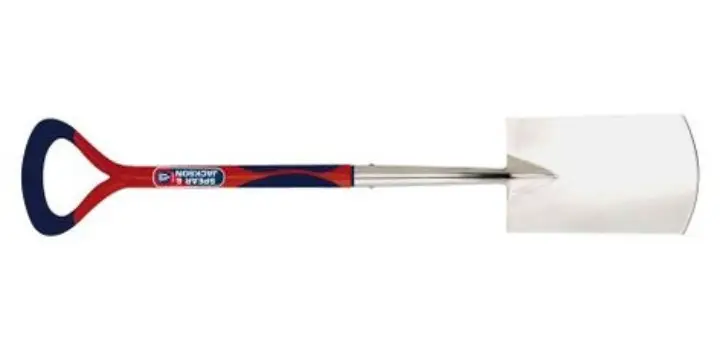
Spear & Jackson Stainless Digging SpadeClick Here to Check Best Price
A flat head won’t sink into the dirt as well as a pointed edge but it will offer a much better edge to use when the situation requires something more accurate. After moving and compacting your turf you’ll need to use a spade to refine the edges. A spade is perfect for this.
If you’re building in a harder to reach location or if you’re alone and needing to carry a lot of tools on your own a folding spade or shovel may work well for you. They’re generally much smaller but a lot more portable.
You’ll have to spend a lot more time digging and compacting but a foldable shovel will fit perfectly into a backpack and allow you to get to more inaccessible places.
Handsaw / Chainsaw

Craftsman Hand Saw, 15 InchClick Here to Check Best Price
Most dirt jump tracks are built on a wooded hill. You’re less likely to require permission to build in a forest than you are in a field. Plus you have access to much better natural building materials such as trees and soft dirt.
A regular hand saw or chainsaw, if you have access and training, is extremely helpful when building bike tracks. With a good sharp saw, you can make bike jumps much faster by laying a base of logs and then covering that with dirt.
Planning your jump track around a location is important but it’s unlikely you’re going to stay out the way of all trees and debris. A high-quality saw will clear your line much quicker than doing everything by hand. It will also help you cut logs to a perfect length when you’re building jumps around logs.
Many people simply opt for a reputable folding saw that can fit in a backpack. Very portable and safe when folded. If you can find a saw that has blades which cut on the push and pull stroke will greatly increase the effectiveness of said saw.
A chainsaw will save a lot of time when cutting wood but generally isn’t needed unless you’re working on a large multi-person project or competition.
Machete or Billhook

CRKT Halfachance Fixed Blade MacheteClick Here to Check Best Price
Brambles, vines and other prickly weeds are a nightmare when building singletrack trails. These bushes will tear up your skin, your clothes and worst of all, they’ll likely cause a load of punctures.
Getting rid of brambles or holly is also a massive pain. You can’t just grab the base and pull them out like you can with regular weeds, you’ll tear your skin apart. A machete or billhook is a great tool to use instead.
A machete is basically an extended dagger that only has a blade on one side, has a comfortable handle and is generally curved upwards. Billhooks are similar but with a curved hook at the end of the blade.
With a machete, you can chop in one easy movement from a safe distance. As I said, perfect for brambles and holly bushes. I see two advantages of using a billhook instead of a machete. The hook is great for pulling your freshly chopped trimmings from a bush. I would say it’s also slightly safer. There is no pointed end that you can accidentally drop on yourself.
As a machete can be used as a dangerous weapon and is very similar to a knife I recommend that you’re very careful when and where you take one. Police and other members of the public could get very nervous about someone running around the woods with a large blade.
Pruning Shears
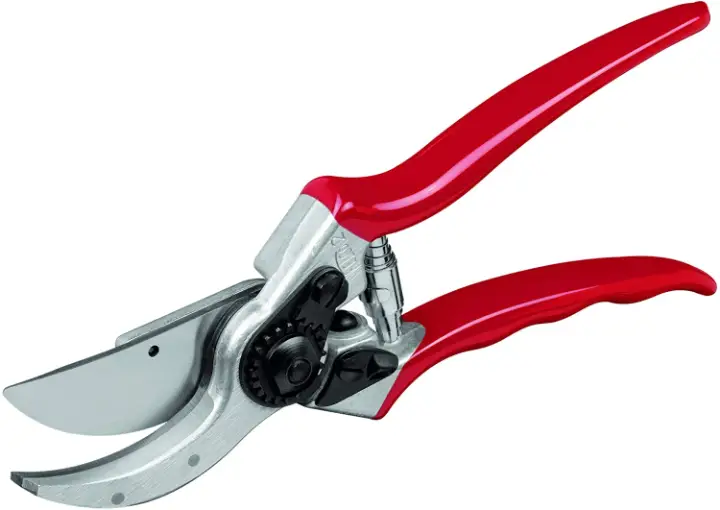
Felco F-2 Classic Manual PrunerClick Here to Check Best Price
My first port of call for a tool like this is a machete. If it’s too risky to take one of these to my trails or if I lack the relevant training I will settle for some sharp pruning shears.
You can purchase these as a handheld or extended two-handed use. Many gardeners use both of these options and they’re great for cutting back bushes, brambles or even small branches.
If you need to carry your tools a long way go for the handheld shears. They can take down fairly thick branches. If however, you can transport some larger tooling, extended shears are perfect. The handle extension provides so much extra force you can take off substantial branches. Longer tools will also let you get to the base of an unruly holly bush without scratching yourself to pieces.
Wheelbarrow
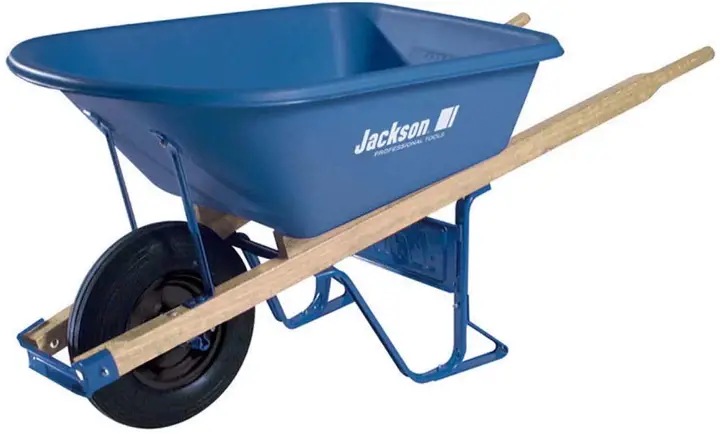
Jackson Professional WheelbarrowClick Here to Check Best Price
Behind the obvious spades and saws, I would say a wheelbarrow is one of the most important products you can buy for trail building. Transporting all your tools is just the simplest use for a wheelbarrow.
Most mountain bike jumps are built from dirt directly next to their location. This is the easiest method but not always the best. A wheelbarrow will carry a huge amount of dirt very easily. I prefer this as you can dumb it exactly where you need it. Throwing dirt straight from a hole next to the jump makes it hard to shape your jumps effectively.
Digging one big hole instead of one for each jump is much better. I always dig the hole too close to the jump, preventing me from expanding the jump or course in the way I’d like to.
I wouldn’t advise you to look for many specific elements when buying a wheelbarrow. Something good quality with a reliable wheel will do the job perfectly. You can get many different sizes, the perfect size being entirely up to you.
Tarmac Rake

Spear & Jackson Wooden Handle Tarmac RakeClick Here to Check Best Price
An old and simple tool that can be very useful on the trails. The usefulness of a rake is determined by two main things.
Firstly, the quality and durability of your rake are important. A regular garden rake won’t last as long as you need it to on the trails, you need something more like a tarmac rake. Secondly, not all seasons really warrant the use of an axe. In many cases, you can get by with your shovel or spade.
Autumn will nearly always call for a rake. Trails are covered in leaves, the mud is wet and there’s still an abundance of weeds. A metal rake can move leaves much faster than a shovel. A new trail will benefit from the top layer of soil being disturbed or removed.
A rake is great for doing this as dirt can be broken up without digging massive amounts, shallow roots can be cut and torn much easier than by hand and as I mentioned before, you’ll get rid of a lot of leaves.
Mattock / Pickaxe
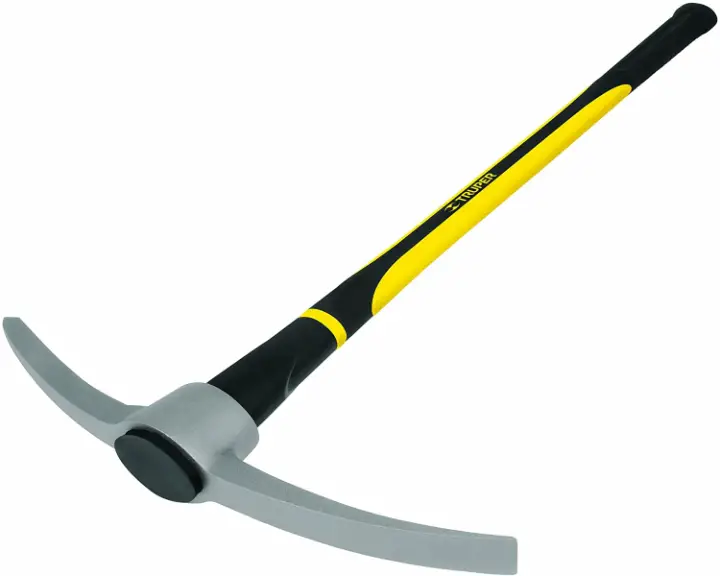
Truper Railroad PickClick Here to Check Best Price
A mattock, commonly known as a pickaxe, has a shaft typically made of wood with a two-ended head. The shaft is attached through an eye in the middle of the head.
There are two forms of the mattock. A cutter mattock will combine an axe and adze in the head. Pickaxes’ are more common, they combine a pick and adze. The pick effectively being a pointed end.
Gardeners use this tool all the time. It’s great for shifting hard-packed dirt, stone or dirt filled with rock. I like to get this tool out to break up dry or hard-packed dirt. You can force a shovelhead through dirt in most conditions, it doesn’t mean it’s always going to be enjoyable or time-efficient.
A pick mattock is in its own league when presented with tough or dry dirt. I will use the sharp pick end to penetrate and break up the ground before using a shovel to move it.
Another great use for this tool is stuck rocks. It’s common to find large stones or rocks buried when digging bike jumps. Digging these rocks out the ground is a huge pain and using your spade as a lever can easily damage it. This is where you need the mattock again.
The pick can be used to break up larger items or to attack the surrounding ground, breaking it up ready for you to simply lift the rock out.
How to Build Dirt Jumps
Now you know about the best tools to use when building dirt jumps you need to go out and do it. High-quality tools are great but you need the right ideas, location and planning before you’re building the trails you see on YouTube.
Planning your route and jumps is very important. Some of you will be lucky enough to have access to a field and a digger but most of us won’t. However you build your jumps, you need to concentrate on planning your route. Take hills, trees, rocks and other obstacles into account.
Can you use them for features? Can they be moved? Or do you simply need to make sure your trail avoids these altogether? A pair of trees close together can provide a great canvas for a berm. A boulder could be transformed into a simple tabletop. Everything in your vicinity can be used to create a better trail.
Accessibility also comes under planning but is still very important. I have briefly mentioned this earlier in this article but planning your tooling is important. Not all building locations can be accessed by car, with many needing an uphill hike to reach. Even with a wheelbarrow, it’s likely you’re going to be struggling to carry your tools up and down the hill each day.
The simple tip here is to try and purchase the most durable tools with the best portability for your situation.


